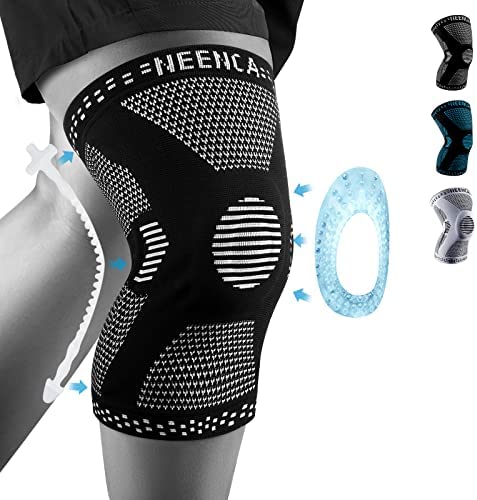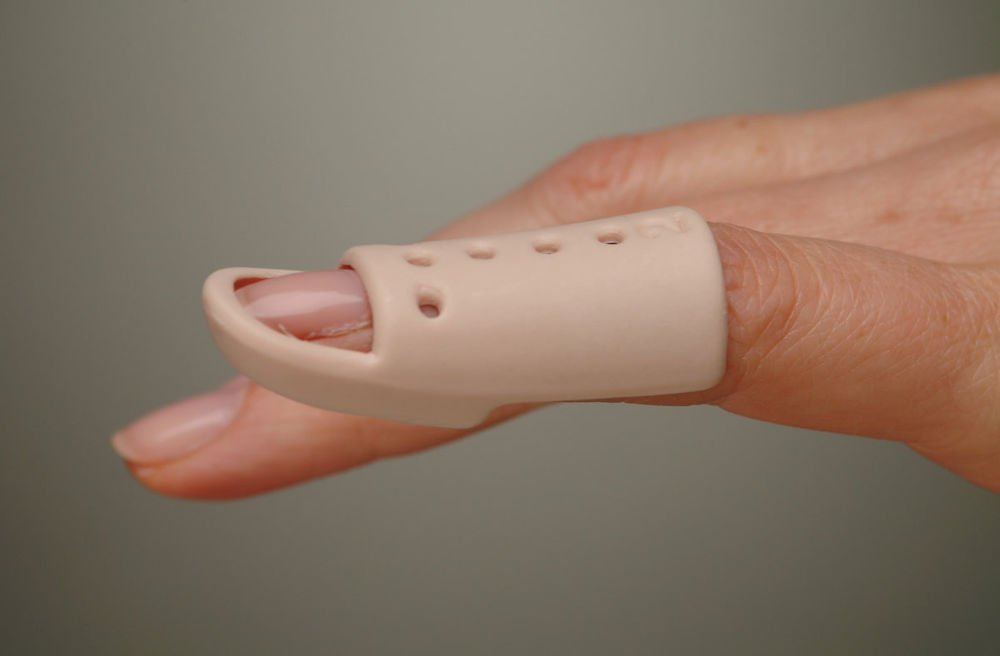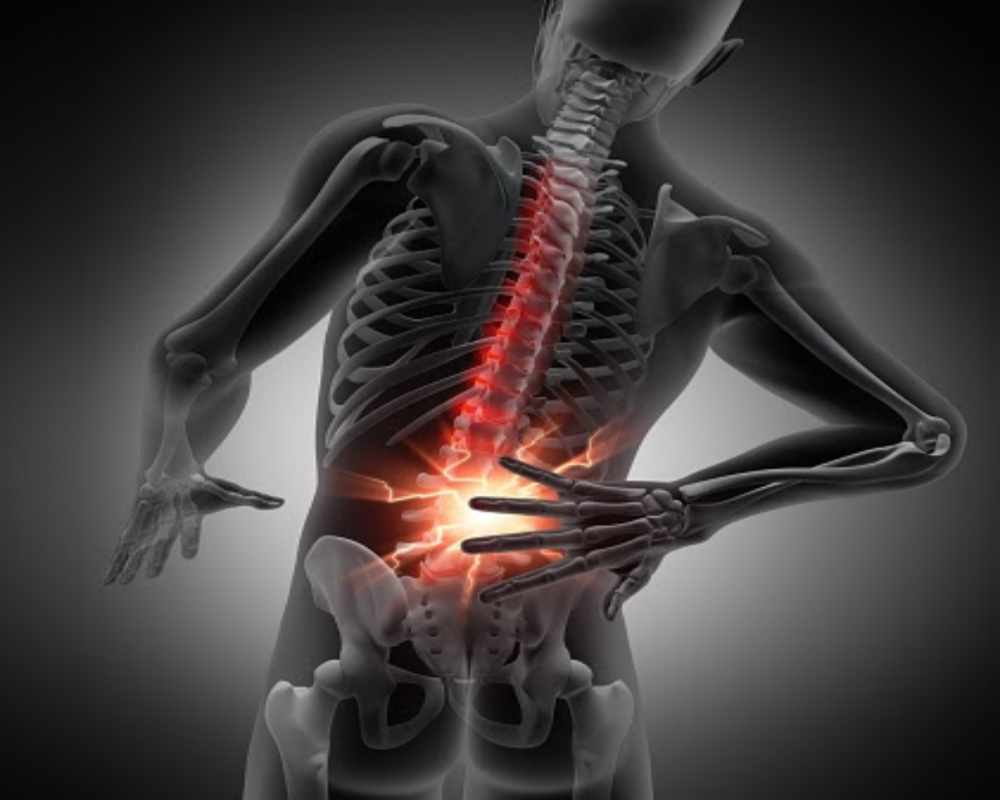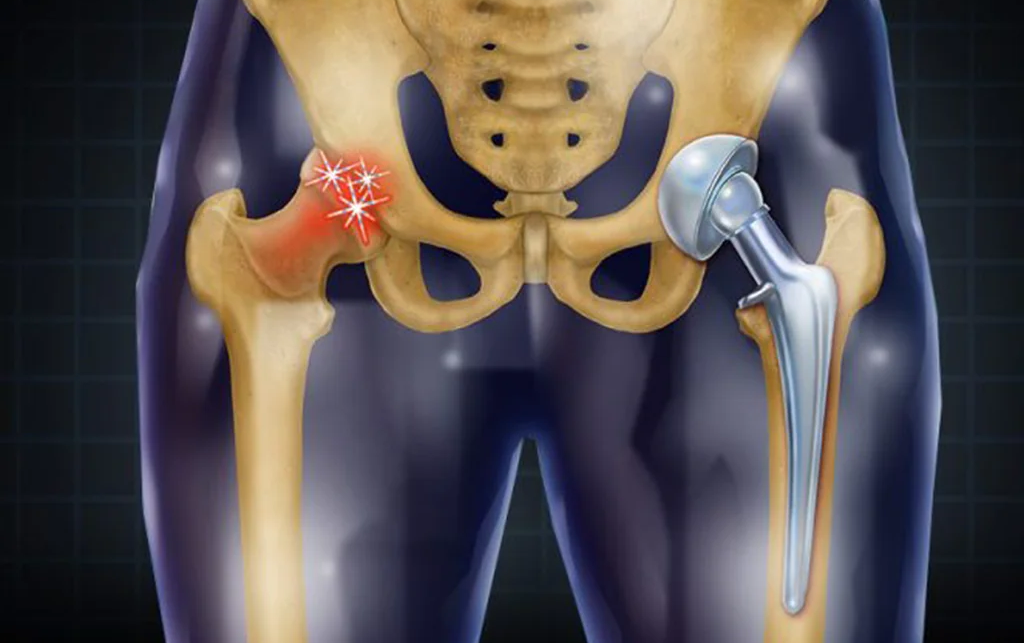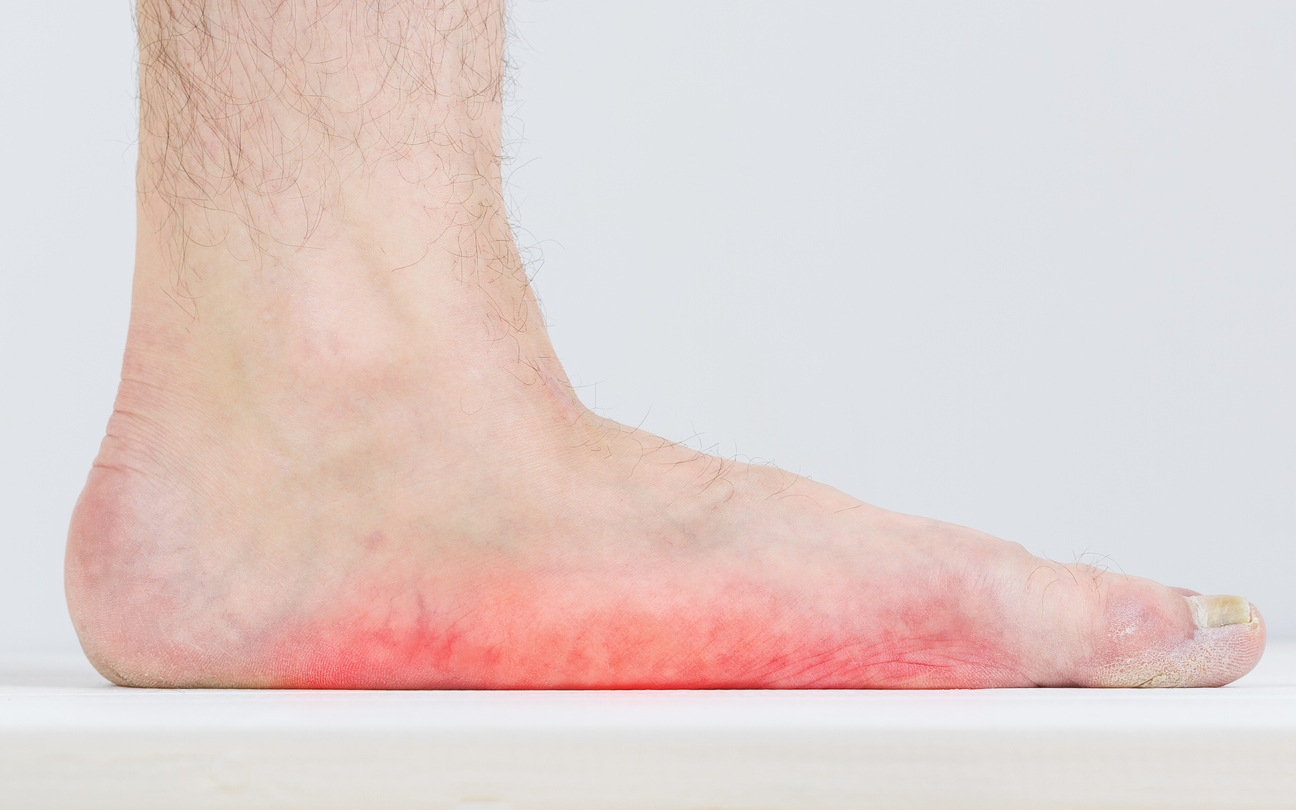Get to Know the Symptoms of a Dislocated Shoulder and How Long the Pain Lasts Afterward?
Symptoms of Shoulder Dislocation
Shoulder dislocation is a common injury in the shoulder area, occurring due to the displacement of the bones connected to the joint. Shoulder dislocation refers to the movement of bones from their natural position, causing pain, weakness, and a complete loss of shoulder movement.
The symptoms of shoulder dislocation vary based on the degree, severity, and extent of joint instability. Below is a comprehensive list of symptoms that a patient may experience when suffering from a shoulder dislocation:
- Severe Pain: The pain is intense in the case of shoulder dislocation, increasing when attempting to move or use the arm in any way. The pain may be constant or only occur when trying to move the shoulder.
- Shoulder Deformity: There may be visible deformation in the shape of the dislocated shoulder, where the bones may appear off-center and out of their natural position.
- Prominence of the Shoulder: The patient may feel a protrusion at the front of the humeral head, with a noticeable bulge of the round bone at the back of the shoulder.
- Restricted Shoulder Movement: Due to the dislocation, it becomes difficult for the patient to move and stabilize the shoulder, and the patient may completely avoid using the arm on the injured side.
- Swelling and Inflammation: The patient may notice swelling and inflammation in the area of the injured shoulder due to joint inflammation or edema.
- Coldness and Numbness: Shoulder dislocation can cause discomfort or feelings of numbness or weakness in the dislocated area, and the patient may experience tingling or pins and needles in the neck or arm.
- Difficulty in Endurance: The patient may face difficulties in using and enduring the injured shoulder normally, resulting in a reduced range of motion and the ability to perform daily activities.
Shoulder dislocation cases require immediate treatment to prevent complications or worsening of symptoms. It is crucial to provide immediate medical care and follow the therapist’s instructions to stabilize the dislocated shoulder, reduce pain and swelling. Treatment for a shoulder dislocation typically involves using special splints to stabilize the joint and assist the shoulder bones in returning to their natural position.
In cases of severe dislocation or potential complications, the patient may need surgery to repair damaged tissues and restore joint stability. It is also important to adhere to an intensive physical therapy program to regain balance and strength in the muscles surrounding the shoulder and reduce the risk of recurrent dislocation in the future.
In summary, the symptoms of shoulder dislocation are characterized by severe pain, visible deformity, restricted shoulder movement, swelling, coldness, and numbness. The patient must receive the necessary medical care and follow treatment instructions to stabilize the shoulder and restore its normal functions.
What to Do in Case of a Shoulder Dislocation?
Shoulder dislocation is a common injury that can occur due to a fall or a strong impact on the shoulder. In case of a shoulder dislocation, the arm bone slips out of the socket-like cavity in the shoulder blade, usually causing severe deformation and pain. In this article, we will review a set of steps that can be taken when you suffer a shoulder dislocation.
Consult a Doctor: The first important step when experiencing a shoulder dislocation is to consult a doctor immediately. The doctor will examine the injured area and assess the severity of the pain and swelling. You may be asked to undergo additional examinations such as X-rays to confirm the diagnosis and rule out any fractures or other damage in the shoulder joint.
Thermal Treatment: The doctor may reposition the shoulder bones into their proper place using a technique called manual manipulation. This procedure involves gently moving the shoulder and returning the joint to its original position. Some pain relievers may be given to you to alleviate pain before this procedure.
Wearing a Shoulder Brace: After repositioning the shoulder to its proper place, wearing a special shoulder brace for a period of time, usually several weeks, may be recommended. This helps stabilize the shoulder and prevent its movement until the joint fully heals.
Occupational Therapy: It is important to follow a rehabilitation program that includes exercises, massage, and stretching of the muscles surrounding the shoulder afterward. This program helps in regaining the range of motion, strength, and stability in the joint. This program should be supervised by an occupational therapy specialist who will guide you in every step.
Surgery: In rare and severe cases, surgical treatment may be necessary. Surgery is warranted when there is significant damage to the nerves or blood vessels, or in cases of recurrent shoulder dislocations despite non-surgical interventions. The surgery may involve repairing the damaged tissues and stabilizing them or reducing the risk of recurrent injury.
Future Caution: After recovering from a shoulder dislocation injury, it is important to take some measures to avoid a similar injury again. You may be directed to wear a special shoulder brace or splint for a certain period to prevent unwanted movement and strengthen the joint. It is also advised to avoid carrying heavy loads and engaging in activities that put excessive pressure on the joint until it is fully healed.
Follow Medical Instructions: It is extremely important to follow the doctor’s instructions precisely to ensure a correct and rapid recovery. Any recommendations regarding taking pain relievers or the proper application of ice to reduce inflammation and pain should be observed.
Good care and personal attention can contribute to the speed of the healing process of a shoulder dislocation. Consult a doctor if there is no improvement after a reasonable period or if the pain and swelling increase.
Does Shoulder Dislocation Cause Pain?
- Shoulder dislocation is a common injury experienced by many people around the world. It occurs when the head of the humerus bone comes out of the socket in the shoulder blade. This dislocation can result from a strong force on the joint or due to a sudden, abnormal movement of the shoulder.
- To diagnose a shoulder dislocation, a physical examination of the shoulder is conducted to check for pain, swelling, and visible deformities. X-ray imaging may also be performed to verify the position of the bones in the joint.
- A shoulder dislocation can cause sharp pain and swelling in the shoulder area. This may be accompanied by a feeling of weakness or numbness in the arm. In some cases, a shoulder dislocation can affect the nerves, tendons, and blood vessels surrounding the shoulder, increasing the severity of pain and causing other complications.
- Some individuals with a shoulder dislocation may experience chronic complications. These may include:
- Shoulder Instability: The shoulder may become unstable after a dislocation, frequently leading to the bone head coming out of its place. This means that the affected person may experience continuous pain and weakness in the shoulder and may require surgical procedures to restore stability.
- Joint Inflammation: Recurrent dislocation of the shoulder can lead to joint inflammation, a condition known as chronic joint inflammation. The affected person may experience continuous pain, swelling in the shoulder, and difficulty moving it.
- Ligament and Tendon Tears: The ligaments and tendons in the shoulder can be damaged during a dislocation. If these damages are not properly treated, they may increase the likelihood of future shoulder problems.
- Chronic Pain: Pain in the shoulder may persist after the early healing period and become annoying and continuous. Those suffering from this chronic pain need separate treatment to manage the pain and improve their quality of life.
- Shoulder dislocation may require immediate medical treatment to return the joint to its normal position and relieve pain and discomfort. Recovery from a shoulder dislocation may take several weeks before normal shoulder functions are regained. Individuals with a shoulder dislocation should consult a doctor to assess their condition and receive the necessary treatment.
In conclusion, individuals with a shoulder dislocation should be aware of potential chronic complications and adhere to appropriate medical care to avoid them. A shoulder dislocation can cause long-term health problems, so it should be taken seriously and necessary steps should be taken to treat and prevent it in the future.
What are the Symptoms of a Tear in the Shoulder?
The symptoms of a tear in the shoulder are common issues that individuals might encounter in their daily lives. A tear in the shoulder can lead to reduced movement and the ability to use the affected arm normally. It is important for a person to be aware of the symptoms that may indicate a tear in the shoulder, so they can obtain appropriate treatment in a timely manner. In this article, we will review a set of symptoms of a tear in the shoulder and discuss how to treat them.
Shoulder Pain and Swelling: A person suffering from shoulder injury may experience acute pain in the affected area, along with redness and swelling. This pain typically increases at night and when lying on the affected shoulder.
Increased Pain with Arm Movement or Shoulder Shaking: When attempting to move the injured arm or shake the shoulder, the person may experience increased pain. Such movements can exacerbate the tearing of the ligaments in the shoulder.
Weakness in the Arm: The individual might feel weakness in the injured arm, affecting their ability to use it normally. They may struggle with lifting or moving objects using the affected arm.
Pain Spreading Down the Arm: In cases of severe shoulder tear, the pain may radiate from the shoulder down through the arm, possibly affecting the elbow as well.
Deformation in the Arm: A person with a torn shoulder might notice a deformity in the arm, known as “Popeye deformity,” where the muscles appear bulging or distorted in the injured arm.
Treatment for Shoulder Tear:
In cases of diagnosed shoulder tear, it’s essential for the individual to receive appropriate treatment to alleviate pain and restore normal use of the shoulder and arm. Treatment may include the following steps:
Physical Therapy: Typically, the doctor will recommend physical therapy to strengthen the muscles around the shoulder and increase their flexibility. This may include exercises for stretching, muscle strengthening, and improving balance and stability.
Medication: The doctor might prescribe pain relief and anti-inflammatory medications, such as non-steroidal anti-inflammatory drugs.
Surgical Treatment: For severe shoulder tears that don’t improve with traditional treatment, the doctor may recommend arthroscopic surgery to repair the damaged ligaments. This surgery requires using small instruments through tiny holes in the shoulder to access and repair the injured area.
Rest and Self-care: The doctor might recommend certain self-care measures to accelerate recovery and reduce pain. These may include applying ice to the injured area, avoiding activities that increase pain and pressure on the shoulder, and wearing a shoulder brace to minimize excessive movement.
Open Shoulder Surgery: In cases of significant ligament tears where conservative treatment fails, open shoulder surgery might be necessary. This surgery involves opening the wound and repairing the ligaments with precise cuts and proper fixation.
Finally, it’s important for individuals to be aware of the symptoms of shoulder tear and to consult a doctor if they experience any of these symptoms. Early diagnosis and appropriate treatment can help reduce potential complications and contribute to a quicker recovery.
How Long Does Shoulder Dislocation Pain Last?
What is the duration of the long-term pain that a patient might experience in case of a shoulder dislocation? This is a common question asked by individuals suffering from shoulder dislocation. Shoulder dislocation can cause severe pain and significantly affect the quality of their life. In this article, we will discuss the extent and duration of pain in the case of shoulder dislocation.
The duration of pain in the case of shoulder dislocation varies from person to person and depends on several factors, including the severity of the injury, the type of dislocation, and the treatment method followed. Generally, pain can last from several days to several weeks.
After a shoulder dislocation, the patient may feel mild pain in the affected area, especially when moving the shoulder. This pain may worsen after a period of rest and may even occur after exercise, not during it. Swelling may also accompany the pain.
Shoulder movement can cause pain and swelling due to the excessive strain on the inflamed tissues. Resting the affected area and applying ice is usually recommended to alleviate pain and swelling. The use of pain relievers to alleviate symptoms may also be advised.
In addition, patients are advised to stabilize the injured shoulder using a bandage or a sling for stabilization. In severe cases of shoulder dislocation, the patient may need to wear a splint for an extended period to ensure the shoulder’s stability and proper recovery. When the patient is able to regain normal shoulder movement without any symptoms, the dislocation is likely healed. This usually happens within a few weeks of recovery. However, the patient should continue to monitor pain and any new symptoms during daily exercises.
If the pain persists for a long time, becoming bothersome and negatively impacting the patient’s life, it is advised to visit a doctor for an evaluation. The patient may need additional therapeutic measures such as physical therapy sessions or surgical intervention to repair the damaged tissues.
In conclusion, patients should take enough time to recover from a shoulder dislocation and avoid straining the affected joint. The patient should be cautious and avoid activities that can increase the risk of re-dislocating the shoulder, such as vigorous sports or violent movements.
Is recovery from a shoulder dislocation possible?
Absolutely! Complete recovery from a shoulder dislocation is possible based on the degree of dislocation and treatment method. The recovery duration depends on several factors, such as the type of dislocation, the doctor’s assessment, and adherence to treatment and physical exercises.
In the case of a minor dislocation, recovery may require a few weeks to several months. Treatment usually includes wearing a stabilizer or splint to maintain the shoulder’s position and prevent unwanted movement. Additionally, the doctor may recommend medications to relieve pain and swelling.
After alleviating pain and stabilizing the shoulder, you will be directed to physical therapy sessions to strengthen the muscles surrounding the shoulder and restore the range of motion. It’s important to adhere to the exercises and guidelines provided by the physical therapist.
Although people can generally return to daily activities after a period of treatment and recovery, there may be some restrictions or recommendations to avoid re-injury. Always consult a doctor for an accurate assessment and specific guidance for your condition.
Shoulder Dislocation Treatment
The treatment for a shoulder dislocation depends on the severity and degree of the injury. Here are some steps that can be taken to alleviate discomfort and accelerate healing after treatment:
- Rest: Rest your shoulder, avoid painful movements, and stay away from exercises that caused your shoulder dislocation. Stabilize the shoulder joint in its place using a splint or shoulder brace.
- Apply Ice: Apply ice to the shoulder for 15-20 minutes every hour to reduce pain and swelling. Ensure you place a towel between the ice and skin to protect your skin from frostbite.
- Follow Medication Treatment: Take some pain relief medications based on your doctor’s advice. Your doctor may also recommend non-steroidal anti-inflammatory drugs to reduce swelling.
- Physical Rehabilitation: Physical therapy sessions might be recommended to strengthen shoulder muscles and restore joint movement naturally. Physical therapy exercises, massage techniques, and heat and cold therapies can be used to achieve good results.
- Rest and Gradual Return to Activities: The shoulder needs rest and time to heal properly. After a period of rest, you can gradually start moving and return to routine activities, avoiding strong and sudden movements.
- Avoid Repeated Injuries
After recovering from a shoulder dislocation, the joint may be prone to repeated injuries. To avoid future injuries, some preventive measures can be followed, such as:
- Strengthening the muscles around the shoulder with therapeutic rehabilitation exercises.
- Avoiding activities that require excessive shoulder effort and may increase the risk of injury.
- Using protective padding and avoiding falling on the shoulder.
- Wearing appropriate protective gear in contact sports.
If you suspect a shoulder dislocation, it is preferable to consult a doctor immediately to get the correct diagnosis and appropriate treatment. The doctor may recommend additional examinations such as X-rays or MRI to assess the joint condition and ensure there are no other injuries.
In conclusion, patients must follow the doctor’s instructions and not rush back to routine activities until the shoulder is fully healed. This requires patience and adherence to proper treatment and rest.
There is no doubt that a shoulder dislocation can be a painful injury that requires correct treatment. However, by following the doctor’s instructions and appropriate treatment, most people can fully regain normal shoulder functions in a time frame ranging from several weeks to a few months.


